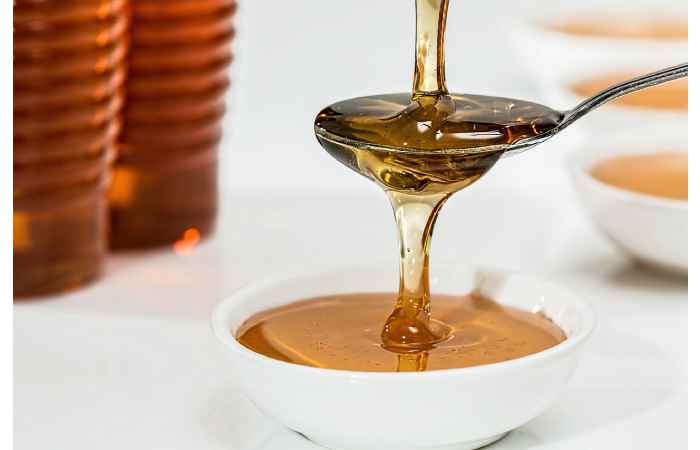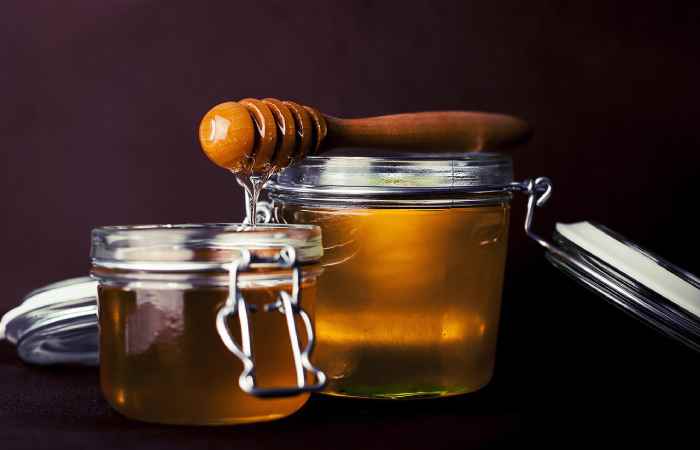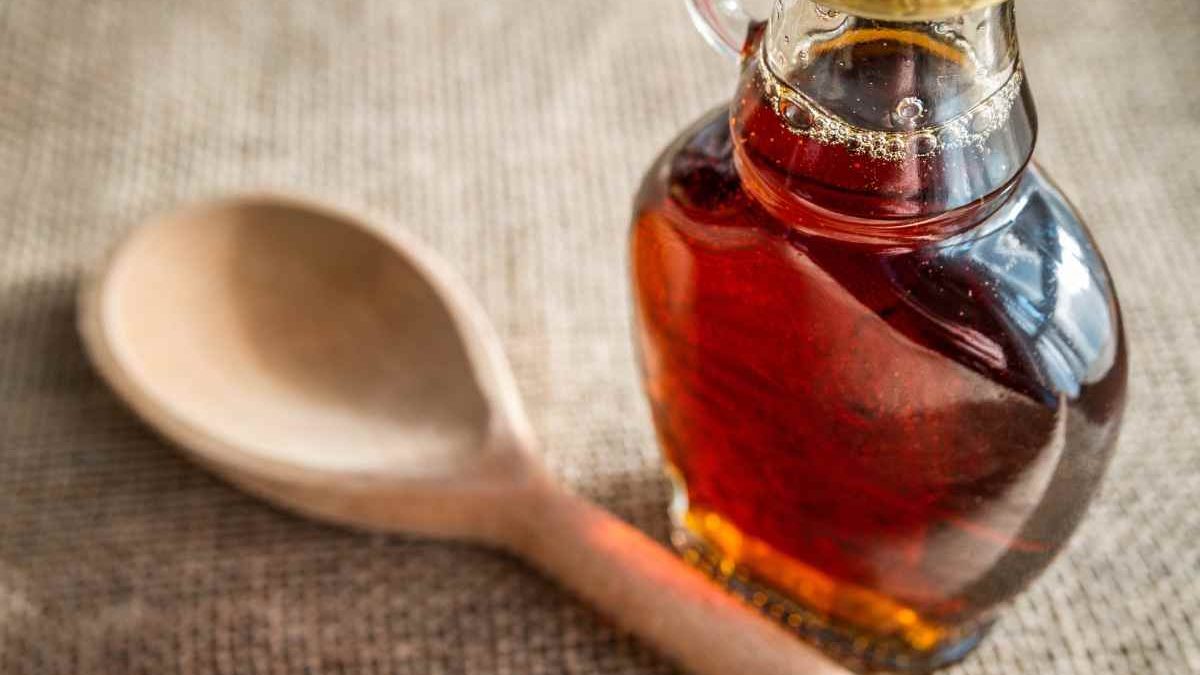Table of Contents
What Is Demerara Syrup?
Demerara Syrup is a processed sugar that is minimally processed, gives a golden brown colour, and has some large grains, thus providing a crunchy texture. Therefore this taste is much deeper than the turbinado sugar.
It originated from the British colony and know called Guyana of Damara. Thus this sugar is sourced from Africa.
Where Can You Buy Demerara Syrup?
Therefore, demerara sugar is purchased from most large stores and grocery retailers. It is often found in some sections, like spice sections, if you can’t find it in sugar sections. It is widely available for all foods on amazon.
What Is The Finest Substitute For Demerara Syrup?
Turbinado sugar is the nearby substitute for demerara. And it has a flavour like caramel, whereas demerara sugar has a deeper molasses-like flavour. Raw sugar will be the next best substitute to make simple syrup. And for baking applications, you can go for light brown sugar.
Frequently Asked Queries – Demerara Syrup
Is Demerara Syrup Similar To Simple Syrup?
Demerara syrup uses the same ratio and elements as the simple syrup. The only difference is that in place of white sugar, demerara syrup uses demerara sugar which is less refined and donates a caramel flavour to the syrup.
Is Brown Sugar Similar To Demerara Sugar?
Brown sugar is an amalgamation of white sugar and molasses and has a much finer grain. Demerara sugar has a rougher grain and is slightly process. Both sugars have a similar flavour, although demerara doesn’t dissolve into batters as well as brown sugar does
Why Is It Called Demerara Sugar?
It originally came from the sugar cane fields and is located in the colony of demerara. It was on the north coast of America in the south side, today known as Guyana.
Different Uses Of Demerara Sugar And Soft Brown Sugar

Both demerara sugar and soft brown sugar are predominantly used in baking. But due to their different structure and flavour profiles, they are used for other purposes.
Demerara sugar’s coarse texture is well-suits to applications requiring a crunch. These are typically biscuits, flapjacks and certain cakes such as crumbles.
Soft brown sugar is more widely suits to baking sponge cakes, biscuits and pastries, and it adds colour, flavour and, crucially, depth and volume to these baked goods applications due to its soft and fine-grain texture.
Demerara Sugar Vs Brown Sugar
Demerara sugar is just brown sugar. Fake – fake – fake. Demerara not only naturally contains molasses, whereas brown sugar contains an additive, but it also varies in the following ways:
- Treat. Some people wish for brown sugar, believing it to be healthier and less processed than white
- sugar. The truth is that brown sugar is often just white sugar mixes in molasses. So, comparatively, demerara is less processed than brown sugar. It’s a bit more of a way to do it – but it’s still a work in progress. It means it is no longer a natural sugar or healthy.
- Vitamins and minerals. Demerara sugar and brown sugar contain some of the vitamins and minerals in molasses. But let’s be actual here – it’s sugar, and you will never be the main focus of vitamins and minerals. And when you eat sugar, you should only consume it in moderation, and the effect of nutrients will not be significant anyway.
Calories
A 100 gram (g) portion of demerara sugar gives you a hefty 375 calories, compared to 380 calories for brown sugar. Thus, young adolescents consume slightly fewer calories. But not nice anyway. And at a teaspoon level, it doesn’t make much difference, regardless.
Sucrose
If you want to evade diabetes, you generally want to escape sucrose. Brown sugar is 94.6% sucrose, while demerara sugar is closer to 93%. What can you use instead of demerara sugar?
Due to its coarse texture and unique flavour profile, there are no like-for-like replacements for demerara sugar – something generally true of all sugars. However, one brown sugar does share similar characteristics, providing a certain compromise is made.
Raw cane sugar can use as an alternative for bakers searching for a product with a coarse texture and similar flavour profile to demerara sugar. It is important to note that demerara sugar generally tends to have a stronger flavour than raw cane sugar, but not always.
How To Make Demerara Syrup?

It combines demerara sugar with a liquid and, most often, water. The ratio of water to demerara sugar can adjust depending on what is use. For cocktails, we recommend using 2:1 demerara syrup or a syrup composed of 2 parts demerara sugar to 1 part water.
This demerara syrup recipe provides the highest flavour intensity of demerara sugar by volume, meaning you don’t dilute your cocktail (or other beverage) with additional water while lowering it to your preferred level of sweetness. Let’s fetch
Add 2 part volume Demerara granulated sugar (available at most large grocery or health food stores or online) to 1 part water in a saucepan. Heat slowly over medium heat to dissolve the sugar. You should notice the mixture start to set as the sugar crystals dissolve into the water and turn into syrup.
Once the demerara sugar has dissolved in the water and the syrup has a uniform viscosity, remove it from the heat and transfer it to a container (a glass bottle or bowl is ideal).
To increase the shelf life of your demerara syrup, you may want to sterilize it using the hot fill method. This additional step in the process above only requires bringing the syrup to a set temperature (between 194 and 203 degrees Fahrenheit), transferring it to a glass carafe or jar, sealing the container, and storing it. It must turn upside down so that all the air gets in, and the bowl is “passed through” superheated demerara syrup. Most importantly, to successfully sterilize demerara syrup, the syrup must detain at a temperature between 194 and 203 degrees Fahrenheit for at least 15 seconds.
Once sterilized (assuming you reseal it and put it back in the refrigerator immediately after use), your demerara syrup should last a month or more.
Why Do People Use Demerara Sugar?
OK, so demerara sugar is *marginally* better for you than white sugar, and not notably different from brown sugar. But there isn’t much of it, which means there’s little benefit to stirring demerara into your tea over white sugar.
So What Is Demerara Use For In This Case?
The biggest reason to use it in anything is because of its taste. White sugar has a sweet taste and is relatively soft. Only this much. On the other hand, Demerara has a more interesting toffee flavour. That’s why Demerara’s biggest fans are the ones who can get the best toffee flavour—the bakers.
Demerara is an incredibly popular ingredient for Chinese cooks, who may sprinkle it on cakes and biscuits. Which is better: a cake with plain white sugar? Or a cake with deliciously crunchy caramel-flavoured sugar sprinkles?
Yes, we are with you there. Demerara may not win any awards as a healthy alternative to white sugar, but it makes one the topping on a cake.
Conclusion
Therefore, it has an amber colour and a mellow flavour, just like soft brown sugar varieties. However, The difference is that Demara sugar has a coarse and crunchy texture. It also has a relatively large crystal size, and soft brown sugar has a texture like smooth and fine caster-size Crysta.

